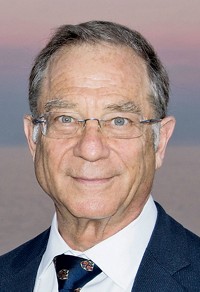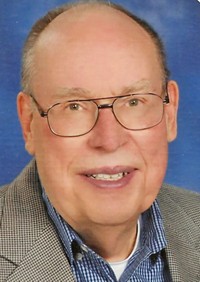Advertisement
Grab your lab coat. Let's get started
Welcome!
Welcome!
Create an account below to get 6 C&EN articles per month, receive newsletters and more - all free.
It seems this is your first time logging in online. Please enter the following information to continue.
As an ACS member you automatically get access to this site. All we need is few more details to create your reading experience.
Not you? Sign in with a different account.
Not you? Sign in with a different account.
ERROR 1
ERROR 1
ERROR 2
ERROR 2
ERROR 2
ERROR 2
ERROR 2
Password and Confirm password must match.
If you have an ACS member number, please enter it here so we can link this account to your membership. (optional)
ERROR 2
ACS values your privacy. By submitting your information, you are gaining access to C&EN and subscribing to our weekly newsletter. We use the information you provide to make your reading experience better, and we will never sell your data to third party members.
Environment
Obituaries
by Victoria Gilman
March 21, 2005
| A version of this story appeared in
Volume 83, Issue 12
PHYSICS GIANT HANS BETHE DIES
Bethe was emeritus professor of physics at Cornell University, which he joined in 1935 after fleeing Nazi Germany because his mother was Jewish. In the late 1930s, Bethe wrote his famous reviews of nuclear physics and, in 1938, published his seminal paper on the theory of energy production in stars that explained how the sun shines. The work was to win him the Nobel Prize in Physics in 1967.
During World War II, Bethe was a key figure in the building of the first atomic bomb as head of the Theoretical Physics Division at Los Alamos National Laboratory. During the 20 years following the war, he became more involved in what he called "political physics," an attempt to educate the public and politicians about the consequences of the existence of nuclear weapons. He was on the President's Scientific Advisory Committee, which gave advice to President Dwight D. Eisenhower and, later, to Presidents John F. Kennedy and Lyndon B. Johnson on such matters as ways to limit nuclear proliferation and further development of atomic weapons.
Bethe was born on July 2, 1906, in Strasbourg, which was then part of Germany. He showed an early genius as a mathematician, studying physics at the University of Frankfurt and doing research in theoretical physics at the University of Munich, where he studied under Arnold W. Sommerfeld, the teacher of Wolfgang E. Pauli and Werner K. Heisenberg, and where he received his doctorate in 1928. In 1930 and 1931, he received fellowships, first to the University of Cambridge and then to the Institute of Physics, in Rome, where he worked with Enrico Fermi. He taught at Frankfurt and Munich. At the Technical University of Stuttgart, he was assistant to Paul P. Ewald, professor of theoretical physics, who would become his father-in-law a decade later when Bethe married Rose Ewald, then a student at Smith College, in Massachusetts, and who graduated from Cornell in 1941.
After his retirement from teaching, Bethe devoted much of his time to astrophysics and wrote papers that attempt to explain why the sun produces fewer particles called neutrinos than predicted by his own theory of stellar energy production. And at the age of 83, he apprenticed himself to Gerald E. Brown of the State University of New York, Stony Brook, in order to learn lattice gauge theory. The theory, which predicts how nuclear matter is transformed at extremely high temperatures into a plasma of particles called quarks and gluons, is one of the most challenging in all of physics. "I'm interested in learning new things," Bethe explained.
In addition to his wife, he is survived by two children--Henry, of Ithaca, and Monica, who lives near Kyoto, Japan--and three grandchildren.--LINDA RABER
Leo Brewer, a member of the University of California, Berkeley, chemistry faculty for nearly 60 years, died of natural causes on Feb. 22 in Lafayette, Calif. He was 85.
Widely regarded as the founder of modern high-temperature chemistry, he contributed in fields ranging from organic chemistry and astrochemistry to ceramics and metallurgy. "It is probably fair to say that he has contributed significantly to our understanding of the chemistry of almost every element of the periodic table," said colleague and former UC Berkeley vice chancellor Robert E. Connick, professor emeritus of chemistry. "He created the field of modern high-temperature chemistry."
Born on June 13, 1919, in St. Louis, Brewer received his undergraduate degree from California Institute of Technology in 1940. On the recommendation of Linus C. Pauling, he entered the chemistry graduate program at UC Berkeley and, only 28 months later, in 1943, completed his thesis work on the effect of electrolytes upon the rates of aqueous reactions.
He was immediately asked to join the Manhattan Project to develop an atomic bomb. He headed a group that was charged with predicting the possible high-temperature properties of the newly discovered plutonium, then available only in trace amounts, and with providing materials for a crucible that would contain molten plutonium without contaminating it.
The combination of theory with experimentation that he exhibited during his World War II work marked his research throughout his distinguished career. Although his research covered an unusually wide range of subjects and employed many different techniques, from theory to spectroscopy, he focused primarily on high-temperature thermodynamics, materials science, studies of metallic phases, and the development of metallic bonding theory. He was also involved at different points in his career with astrophysics and ceramics.
In 1946, Brewer was appointed an assistant professor of chemistry at UC Berkeley. He rose through the ranks to become a full professor in 1955.
In addition to his academic appointment, Brewer was an investigator at Lawrence Berkeley National Laboratory, where he headed the Inorganic Materials Research Division from its inception in 1961 until 1975. He was also active in many professional societies and on the editorial boards of several journals
Brewer is survived by his three children--Roger of Portland, Ore.; Gail of La Cañada, Calif.; and Beth Gaydos of Cupertino, Calif.--and six grandchildren. His wife, Rose Strugo Brewer, died in 1989.
An emeritus member, he joined ACS in 1942.
Wang Jie, 24, a third-year graduate student studying for a doctoral degree in chemistry at UC Berkeley, died after he was removed from life support on March 10. He had been severely injured during a car crash on Feb. 23. Wang's car was hit by a driver who ran a red light while fleeing from police. Wang is survived by his parents, Baozhen Zhang and Jiaqing Wang of Shanghai.
Obituaries are written by





Join the conversation
Contact the reporter
Submit a Letter to the Editor for publication
Engage with us on Twitter